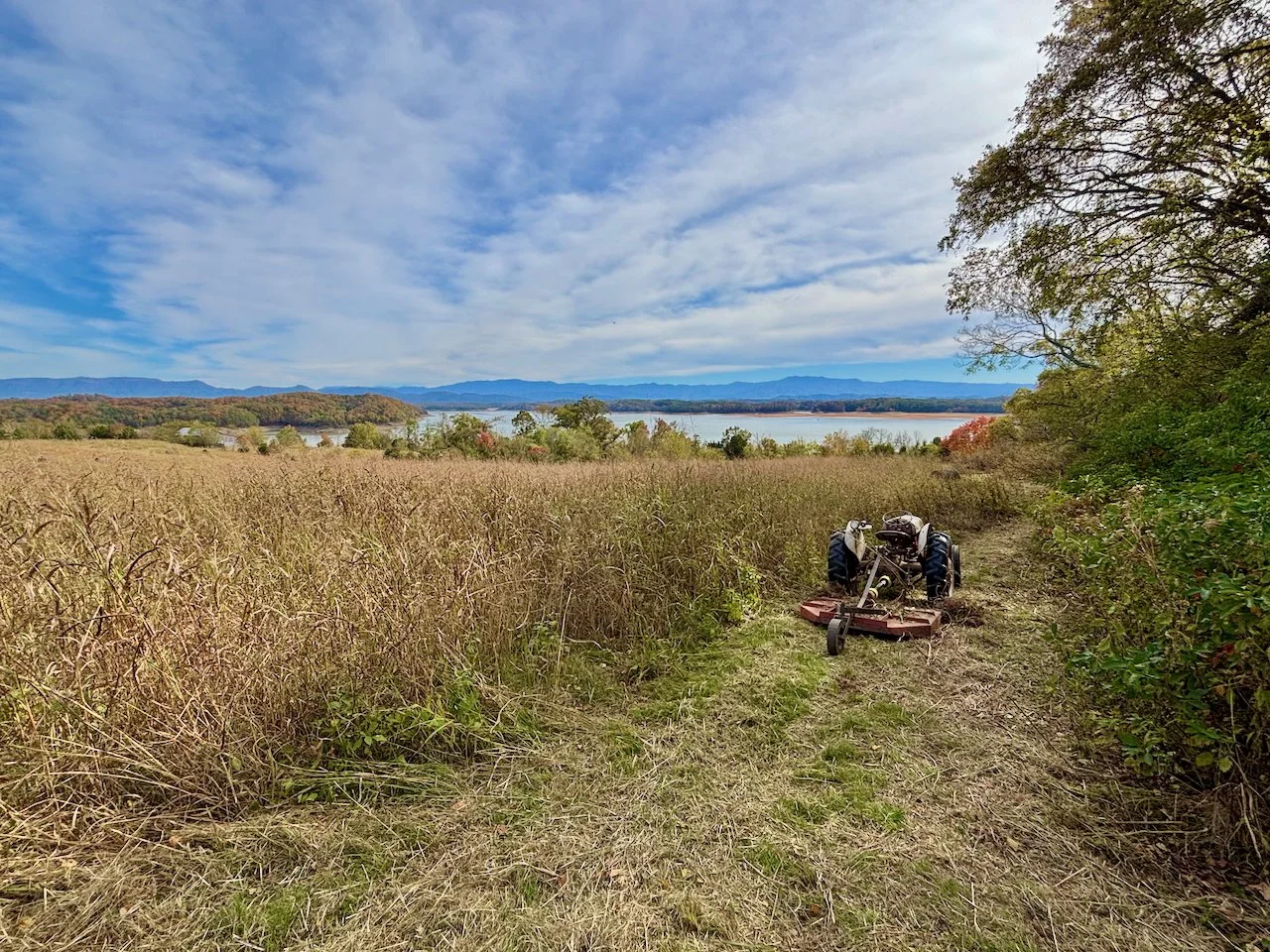Listening - October 2025
1 - Bush Hog
The major success of this trip has been the acquisition of a bush hog. It’s a tractor-pulled farm implement; essentially a large, heavy, rough-cut lawnmower, without an engine. It has two blades that are spun through a driveshaft, which takes its power through gearing off the tractor’s engine (therefore known as PTO, power take-off). This week, many thanks are due to friends Joey and Ben at Kodak Tractor. They sold me this used one for a good price and helped set it up with everything I needed. I wish I’d done this 20 years ago; it’s an efficient tool. I had run Grandad’s old one on the farm as a teenager, but he was somewhat frightened by it (and rightly so), and in the end, he got rid of it, rather than repair or replace it or pass it down. The danger is mostly the exposed spinning driveshaft; various things can get caught in it, and they’ve been known to rather brutally maim and kill farmers. It will certainly focus your mind on the present moment; a meditation in second gear.
Song of earth and sky: bush hog mowing in the west field, pulled by the 1952 Ford 8n.
2 - The Hawks
It’s a friendship of convenience for one of us, and I’m sure I’m being used. But I’ll take it.
A pair of hawks started following me on Wednesday this week, as I was mowing with the bush hog around the perimeter of the farm. They’re certainly familiar with this activity. The cutting exposes the field mice and moles, and I watch the little animals scurry across the newly mown paths, suddenly vulnerable to the aerial assault from the hawks. The majestic birds seem to appreciate the easy prey and come quite close, unafraid of the mechanical cacophony. They’ll sit on wooden fence posts or in nearby trees and seem to enjoy the ease of this hunt.
After following me in the fields on Wednesday and Thursday, one appeared at my Friday early-morning-sunshine stretching session near the house (some distance from the fields), swooping over to announce his presence and alighting in the hemlock tree near the kitchen door, watching. Questioning. “Are you perchance coming up to mow soon?”
On Saturday, one greeted me similarly, this time observing from the chestnut tree on the east side of the house, while I was setting up to burn the brush pile below the old road. She would have to wait until the middle of the afternoon for her easy meal today. I needed to work close to the burn pile; it’s been dry in East Tennessee this week, so I needed to stay nearby, with a watchful eye and the shovel and water hose at the ready.
I’m not in a position to dictate too much in this relationship; all I can control is the timing of some of their meals. Still, it’s nice to be recognized, and it’s gratifying just to be around these magnificent creatures.
3 - Fine Tuning
The tuning of the small farm engines (chainsaws, string trimmers, etc.) is done by sound and vibration. There’s a baseline setting, which might work okay if the air flow isn’t impeded and the fuel lines are clear. But to get it really right for the current conditions of the machine and the atmosphere requires both listening and feeling: you want to find a balance of easy starting, smooth idling, and then the throttle opening to the highest, most powerful RPM. From there, you go just beyond, slightly enriching the mixture to prevent the little engine from running too lean and overheating. I’m getting closer, but I have not yet perfected this art.
4 - Set in Stone
The ancestor who built the Old Brick was Samuel McSpadden. He was a veteran of the Revolutionary War, and in addition to being a farmer on the frontier, was an important maker of gunpowder, famously supplying some for the US forces for the Battle of New Orleans in the War of 1812.
His daughter Polly Berry McSpadden was born in 1800. When Sam was building the house, he pressed her 4-year-old hand into the clay of one of the bricks, then fired the brick in the kiln and placed it in the front wall, to the left of the doorway. Polly was married to Anthony Caldwell in 1826 and was my grandmother’s great-grandmother. Two large, photo-realistic charcoal portraits of Polly and Anthony hang in the house to this day. My wife and I visited their graves in the New Market Cemetery this week, about 15 miles north of the farm. I scraped the moss and lichen off with my shoe and wiped them briefly with a tissue. Next time we’ll bring a bucket and a brush. Our Caldwell line traces back to the 14th century; THESE names and hands preserved in stone are still discernible, knowable. I can do my small part to keep it so.
5
The fall colors; the tuning of an engine; the polyrhythms of hours and the pulse of centuries; the sound of the hawks’ wings; the clouds flying over the old house; the stillness in a silent pause at the highest point on the farm…all is vibration. In this place, I make a conscious effort to sense them, hear and physically feel them, resonate and harmonize with them. All is music. As Buckminster Fuller noted, “I seem to be a verb.” I am listening.
- in flight, TYS-DEN, October 28, 2025



